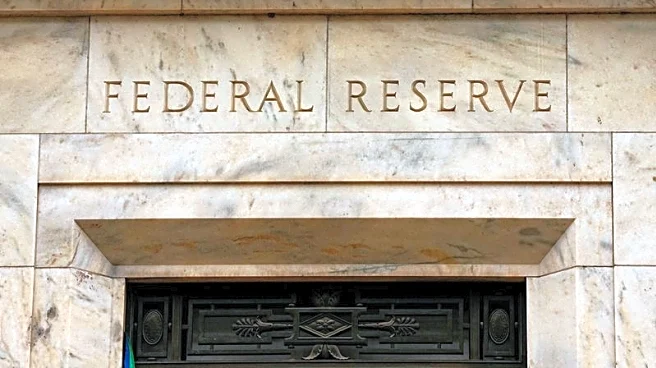What's Happening?
Bitcoin may be poised for a significant upward movement, according to author Adam Livingston. This prediction follows observations from The Kobeissi Letter, which noted a decline in bank cash reserves
at the Federal Reserve to approximately $2.93 trillion. Livingston, a market commentator and author, connects this liquidity squeeze to potential impacts on Bitcoin, suggesting that cash levels are nearing a 'danger threshold' where scarcity could influence market dynamics. He identifies three contributing factors: the U.S. Treasury's cash balance rebuilding, the Federal Reserve's quantitative tightening, and the growth of other Fed liabilities. Livingston argues that these conditions could lead to a shift in policy signals, potentially enhancing Bitcoin's performance.
Why It's Important?
The potential surge in Bitcoin, as suggested by Livingston, could have significant implications for investors and the broader cryptocurrency market. If liquidity conditions improve, Bitcoin's value might increase, benefiting those who have invested in the digital asset. This scenario underscores the interconnectedness of monetary policy and cryptocurrency markets, highlighting how changes in Federal Reserve actions can ripple through financial systems. Investors and policymakers alike may need to consider these dynamics when making decisions, as shifts in liquidity could impact asset prices and market stability.
What's Next?
Should Livingston's predictions hold true, stakeholders in the cryptocurrency market might witness increased volatility and potential gains. Investors may need to monitor Federal Reserve policies closely, as any adjustments in liquidity could influence Bitcoin's trajectory. Additionally, the broader financial community might react to these developments, potentially leading to shifts in investment strategies and market behavior. As liquidity conditions evolve, the cryptocurrency market could experience heightened activity, prompting further analysis and strategic planning from investors and analysts.
Beyond the Headlines
Livingston's analysis highlights the complex relationship between traditional financial systems and emerging digital assets. The potential for Bitcoin to benefit from liquidity shifts raises questions about the future role of cryptocurrencies in global finance. As digital currencies gain traction, their influence on monetary policy and economic stability may grow, prompting discussions about regulation and integration into existing financial frameworks. This development could signal a broader shift towards recognizing cryptocurrencies as significant players in the financial landscape.












